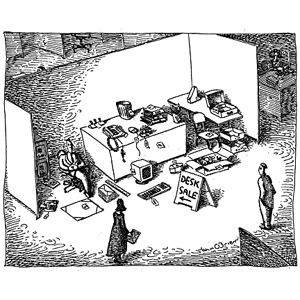This is an indictment of US prisons and criminal justice system. If US prisons are bad, one should better see the condition of Philippine prisons nationwide, which is worse. Although there have been physical and other improvements of Philippine prisons in the past, they are still overloaded or crowded, dirty, unsafe, underfunded, and understaffed. At any rate, the Phil. Gov. is doing its best to improve its prisons system and to professionalize its jail personnel within the limits of its financial straits.
"x x x.
For most privileged, professional people, the experience of confinement is a mere brush, encountered after a kid’s arrest, say. For a great many poor people in America, particularly poor black men, prison is a destination that braids through an ordinary life, much as high school and college do for rich white ones. More than half of all black men without a high-school diploma go to prison at some time in their lives. Mass incarceration on a scale almost unexampled in human history is a fundamental fact of our country today—perhaps the fundamental fact, as slavery was the fundamental fact of 1850. In truth, there are more black men in the grip of the criminal-justice system—in prison, on probation, or on parole—than were in slavery then. Over all, there are now more people under “correctional supervision” in America—more than six million—than were in the Gulag Archipelago under Stalin at its height. That city of the confined and the controlled, Lockuptown, is now the second largest in the United States.
The accelerating rate of incarceration over the past few decades is just as startling as the number of people jailed: in 1980, there were about two hundred and twenty people incarcerated for every hundred thousand Americans; by 2010, the number had more than tripled, to seven hundred and thirty-one. No other country even approaches that. In the past two decades, the money that states spend on prisons has risen at six times the rate of spending on higher education. Ours is, bottom to top, a “carceral state,” in the flat verdict of Conrad Black, the former conservative press lord and newly minted reformer, who right now finds himself imprisoned in Florida, thereby adding a new twist to an old joke: A conservative is a liberal who’s been mugged; a liberal is a conservative who’s been indicted; and a passionate prison reformer is a conservative who’s in one.
The scale and the brutality of our prisons are the moral scandal of American life. Every day, at least fifty thousand men—a full house at Yankee Stadium—wake in solitary confinement, often in “supermax” prisons or prison wings, in which men are locked in small cells, where they see no one, cannot freely read and write, and are allowed out just once a day for an hour’s solo “exercise.” (Lock yourself in your bathroom and then imagine you have to stay there for the next ten years, and you will have some sense of the experience.) Prison rape is so endemic—more than seventy thousand prisoners are raped each year—that it is routinely held out as a threat, part of the punishment to be expected. The subject is standard fodder for comedy, and an uncoöperative suspect being threatened with rape in prison is now represented, every night on television, as an ordinary and rather lovable bit of policing. The normalization of prison rape—like eighteenth-century japery about watching men struggle as they die on the gallows—will surely strike our descendants as chillingly sadistic, incomprehensible on the part of people who thought themselves civilized. Though we avoid looking directly at prisons, they seep obliquely into our fashions and manners. Wealthy white teen-agers in baggy jeans and laceless shoes and multiple tattoos show, unconsciously, the reality of incarceration that acts as a hidden foundation for the country.
x x x."
Read more http://www.newyorker.com/arts/critics/atlarge/2012/01/30/120130crat_atlarge_gopnik#ixzz1khAcb6NZ
